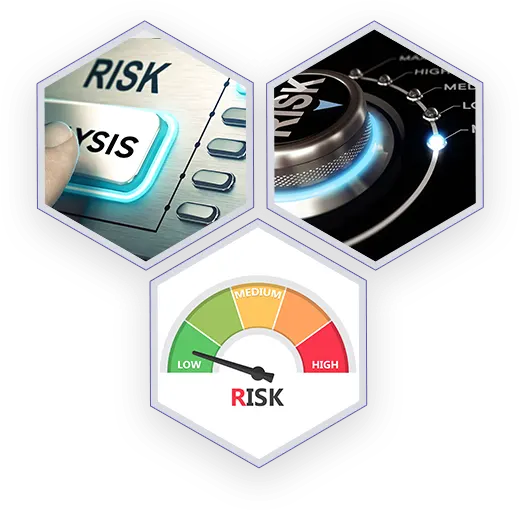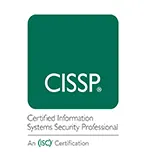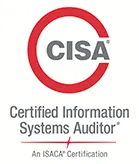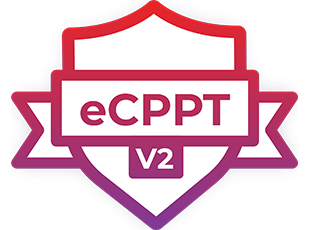
Why Conduct a Penetration Test?
Cybersecurity assessments in the form of penetration tests are a vital part of a strong security plan. These assessments demonstrate an organization's security posture from an adversarial perspective. That’s something technology alone cannot do. Technology is not designed to think outside the box, but a skilled adversary is. Real-world cybercriminals are continuously developing new techniques and honing old ones, and technology on its own cannot keep up.
Cybersecurity assessments that are conducted by certified, experienced professionals will discover issues that could result in a breach. These assessments help address weaknesses and inadequacies in networks that only a trained eye can see.
Assessments can check the box on any compliance or supplier driven mandate to prove your company has taken the measures to protect infrastructure and the sensitive data that it supports.
Knowing exactly what is involved in a cybersecurity assessment from scoping and procedure, to cost, is only a few clicks away.
Book a free consultation with us to get the answers you need to decide.
Why SecuSolutions?
SecuSolutions offers Security Consulting, Managed Security Services, and Security Education.
For over 24 years, we have served nearly every industry. From financial to the public and energy sectors on a global scale, our experience and dedication to security is evident in the deliverables we produce and the solutions we have developed for the security market.
We are brand neutral and offer no outsourced products, solutions, or services; we focus only solutions that have been developed in house and tested by our most valuable resource, our staff.

Certifications
Our team members are certified and hold the most widely recognized and respected security certifications available.
Methodologies
All our penetration tests are conducted using proven methodologies and standards that are recognized worldwide.


OSSTMM
Open Source Security Testing Methodology Manual
Provides a scientific methodology for network penetration testing and vulnerability assessments to identify vulnerabilities from various angles of attack.

OWASP
Open Web Application Security Project
Aims to identify vulnerabilities within web and mobile applications. It provides over 66 controls in total to assess and identify potential vulnerabilities within the functionalities found in modern applications today.

PTES
Penetration Testing Methodology and Standards
Highlights therecommended approach to structuring a penetration test. This standard guides testers through various steps of a penetration test, including initial communication, information gathering, and threat modeling phases.

ISSAF
Information System Security Assessment Framework
This framework is designed to evaluate the network, system, and application controls in the penetration testing methodology. It consists of a three-stage approach and a nine-step evaluation.

NIST
National Institute of Science and Technology
is a set of standards with quality principles that can be used by organizations to develop secure information security applications and to perform security tests. NIST SP 800-115 provides an overview of the essentials of security testing.
The Industries We Serve and Why

Small Business
may be small, but they get the bragging rights to the hardest and most often hit industry segment. Small businesses feel they will not be a target of hackers, hackers beg to differ.
“43% of attacks target small businesses” (source: PurpleSec)
Energy
is vital to our economy. It is also a prime target for adversaries as one major system shut down involving an oil or gas plant or a bulk power plant such as nuclear, weathervane or hydro dam, can spell disaster.
“77% of U.S. energy companies are vulnerable to ransomware attacks via leaked passwords” (source: Houston Chronicle)
Technology
sector is often the ground zero for cyber attacks. Valuable technology, trade secrets, patents and the willingness to adopt new technologies make this sector a soft target for adversaries.
“Technology became the most attacked industry for the first time, accounting for 25% of all attacks (up from 17%). Over half of attacks aimed at this sector were application-specific (31%) and DoS/DDoS (25%) attacks, as well as an increase in weaponisation of IoT attacks” (source: securitybrief.asia)
Manufacturing
is an industry that is underprepared for attacks. The lack of resources, and adoption of security technologies has this industry trailing behind most others. This is alarming considering the importance this segment brings to the economy.
“Attacks on manufacturing companies around the world rose 300% in 2021” according to the Global Threat Intelligence Report
Healthcare
is getting some unwanted attention. 93% of healthcare organizations have experienced data breaches. This is likely due to healthcare systems containing sensitive information that adversaries want.
“Healthcare has the highest number of attacks by ransomware over any other industry” (source purplesec)
Higher Education
needs to hit the books. Despite being an industry conducive to learning, educational institutes are far behind when it comes to security. In fact, adversaries refer to it as a “playground” for them to test their wares and hone their skills.
“41% of higher education cybersecurity incidents and breaches were caused by social engineering attacks” (source purplesec)
Finance and Insurance
are the top industries spending the most money to fight cyber crime says a recent report from Deloitte. So much so, many insurance companies are now offering cyber insurance to companies that require it due to regulation or compliance requirements.
“67% of financial institutions reported an increase in cyber attacks over the past year” (source purplesec)
Government
is forever under attack for obvious and not so obvious reasons. Political reasons, humanitarian reasons, activists, and attacks from other countries are commonplace. Government is generally slow to react and implement change or protective measures, making them a prime target.
For a comprehensive list of attacks, visit (csis.org)
Transport and Logistics
are high on the list of targets for adversaries. Disrupting transport and supply chains can be a lucrative business for them. Ransomware and malware attacks are among the top two methods adversaries use to wreak financial havoc on companies and create panic among consumers.
“The US Department is offering up to $10 million for information leading to the identification or location of the leaders behind a recent ransomware attack by the DarkSide which was a ransomware attack” (source duo.com)
Telecommunication
may include satellite companies, internet providers and telephone companies. The amount of data and infrastructure being handled by this industry makes these organizations a favourable target for adversaries.
“Telecommunications made a significant jump from sixth place in Q4 2020 to become the number-one DDoS target in Q1 2021” (source Daily Swig)
Still not sure if you need a Penetration Test?
How certain is your IT team that they are doing all they can to protect your data and sensitive information from prying eyes?
How much downtime can your company afford?
When was the last time your company conducted a security audit?
Do you know where your most critical data is stored?
Do you know who in your organization has access to what information?
Would you like to know where the holes in your security plan are?
Will you be required to conduct a compliance audit in the near future?
Do you know which of your company’s assets are in the cloud and who’s responsible for protecting them?
Types of Penetration Tests

Internal Penetration Testing
Internal penetration testing, also known as insider threat simulation testing, is conducted to identify and remediate vulnerabilities discovered in the internal network infrastructure. This testing not only simulates the actions of a dismissed or disgruntled employee but also takes the perspective of adversaries who’ve found an internal foothold, mimicking the techniques they might use to exploit vulnerabilities from within the network. It is highly recommended that an internal penetration test is conducted at least once a year or following any major change to the infrastructure. Conducting an internal penetration test is also required by various standards, such as PCI-DSS, ISO27001, and SOC 2.
External Penetration Testing
External penetration tests help to find and remediate vulnerabilities discovered within publicly accessible network infrastructures. The penetration test is performed by utilizing the latest techniques and exploits available, mimicking an adversary's approach. As the external network is the most targeted segment by adversaries, it is highly recommended that an external network penetration test is conducted at least once a year or following any major changes to the publicly accessible infrastructure. External penetration tests can be performed to adhere to required security compliance standards, such as PCI-DSS, ISO27001, and SOC 2.
Cloud Penetration Testing
Cloud penetration tests are assessments that identify vulnerabilities within cloud infrastructures such as AWS, Azure, Google Cloud, etc. While most cloud service providers have standard security measures in place, each organization is responsible for their own security. Due to the numerous options/flexibility available through cloud service providers, and the complex systems that utilize them, new security flaws and/or vulnerabilities likely to be discovered. Cloud Security Assessments ensure that the security of your systems, as well as any cloud-hosted assets are as secure as possible.
Web Application Penetration Testing
Web application penetration tests are conducted to help identify and address vulnerabilities in web applications that could be exploited by adversaries. Web applications are very common and often complex, making them vulnerable to exploitation due to improper coding or configuration. These applications contain valuable, sensitive information that is vital to a company’s operations, making Therefore, web application penetration tests are essential to ensure the security and stability of the application.
General Questions

Scoping Questions

Reports and Deliverables

Penetration Testing Partnership Program

A Partnership like no other.
If you are an IT Consulting company, or a Service Provider that is looking for a way to enhance your service offerings and bring in new revenues, this is a Partnership you need. We know that starting a security division within your company isn’t easy. Finding qualified resources and choosing the right products or services can be difficult and costly.
Benefit by our experience and provide your customers with world class security while making a healthy profit. Providing branded security solutions and consulting services has been our business model for 24 years. Choose either to rebrand our work, or keep it as is.
Some Benefits to Partnering with SecuSolutions
Additional Revenues
Our program offers generous discounts that enable our partners to price penetration services at a fair and reasonable price to their customers, while still maintaining a profit.
Ancillary Sales Opportunities
This point cannot be over emphasized. By nature of the penetration testing we conduct any issues in the networks, applications, and infrastructure will be discovered. Your customers will need additional support and services post assessment. This is your opportunity to provide that service to your customer.
Set the Benchmark
Companies that can preserve good security, but struggle setting the benchmark, can utilize our strengths to establish a level of security that can be maintained using your staff and the services you may already offer.
Go Where your Competition Cannot
Many customers that are looking for managed services qualify the companies they short list on whether they offer security services or not, don’t be on the “do not contact list”. Partnering with us to offer security as part of your service lineup will keep you ahead of your competition.
How do I become a Penetration Testing Partner?
We offer the opportunity to discuss your needs and to determine whether a partnership is right for you. All you need to do is use our booking system and schedule a time that works.
Questions and Answers
Some additional answers to questions that you may have.









